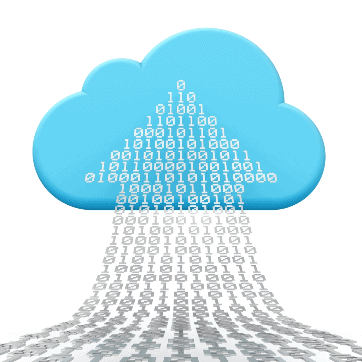Transform Finance by Leaving Your Legacy, and CPM 1.0 Applications Behind

Well, here we are in June. The year-end close is complete, the auditors are gone, 10-Ks and tax filings are done, and budgeting is a distant memory. So, the question now is – what new projects will you take on?
For those companies currently using legacy CPM products that may be going off support such as Oracle Hyperion, SAP BPC, and IBM TM1 a critical decision is coming up.
- Do you stay the course and upgrade to the latest release of the legacy product?
- Do you upgrade to the cloud version of your legacy vendor’s CPM product(s)?
- Or do you make a bold move to a modern, unified CPM platform?
Let’s examine the pros and cons of each of these options.
Door #1 – Staying the Course
Finance executives are known for being conservative, risk averse, and reluctant to change out systems that have been in use for many years. For example, I recently heard a story about a senior Finance executive who is about 5 years from retirement and was weighing these 3 options for his organization. His line of thinking was, being late in his career, he would upgrade his company to the most recent release of their on-premise, Oracle Hyperion applications – so they could be assured of getting support through 2030. He didn’t want to take on the risk of a major CPM system conversion at this point in his career?
have been in use for many years. For example, I recently heard a story about a senior Finance executive who is about 5 years from retirement and was weighing these 3 options for his organization. His line of thinking was, being late in his career, he would upgrade his company to the most recent release of their on-premise, Oracle Hyperion applications – so they could be assured of getting support through 2030. He didn’t want to take on the risk of a major CPM system conversion at this point in his career?
Really? Is that the best decision for the organization? Is that the best decision for your team to remember you by? “Hey, I’m the guy who drove the upgrade to Hyperion Version. 11.1.2.3.4.5.6 – isn’t that great?”
No – that’s not great. There are several questions you should be asking yourself about this path, like:
- How much is that upgrade going to cost your company? (Answer: it could be $500K – $1M and 6 – 12 months.) And what’s the benefit?
- How much is it going to cost your company to continue running and maintaining a fragmented suite of CPM products, and all the software glue that’s required to keep them working together?
- How much is it going to cost to have multiple Hyperion admins on staff?
- Is this approach going to provide your company the agility needed to respond quickly to changing business conditions?
- What’s the impact of this decision on staff development and retention?
Door #2 – Upgrading to the Cloud Version of Legacy CPM Products
 With the software industry having shifted to the cloud as the primary deployment model for most applications, Finance departments are finally catching up. So many organizations are moving, or considering a move, to the cloud versions of their legacy vendor’s CPM products.
With the software industry having shifted to the cloud as the primary deployment model for most applications, Finance departments are finally catching up. So many organizations are moving, or considering a move, to the cloud versions of their legacy vendor’s CPM products.
There are certainly some benefits of going down this path. A big one is eliminating the infrastructure requirements and costs from the equation and shifting that burden to the software vendor. Another benefit is that legacy CPM software vendors such as Oracle, SAP and IBM have shifted most of their R&D investment to the cloud versions of their CPM products. So, you’ll see more innovation in the cloud.
But there are some downsides to going down this path:
- These upgrades can be substantial projects in terms of time, effort and costs.
- Some of the cloud products offered by legacy CPM vendors don’t have the same functionality as their on-premise ancestors. So, you could be moving backwards vs. forward in capabilities.
- Most of the legacy vendor’s cloud CPM products are still fragmented in nature. So, you’ll still have multiple points of integration with ERPs and other data sources, and you’ll still need to move data between products to perform tasks like actual vs. budget reporting.
- And the technical support you’ll get from the legacy vendor on their cloud products, won’t be any better than what you are getting on their on-premise products.
Door #3 – Making a Bold Move to a Modern, Unified CPM Platform
A growing number of organizations have evaluated their options and decided to take the bold path to a modern, unified CPM platform. Yes, it could be risky moving to a new vendor. And this path is going to require a re-implementation and retraining of the users. But there are many benefits to this approach.
modern, unified CPM platform. Yes, it could be risky moving to a new vendor. And this path is going to require a re-implementation and retraining of the users. But there are many benefits to this approach.
- Breaking away from the poor support, and lack of investment in legacy, on-premise products.
- Adopting a modern, cloud-based application – or having the ability to easily move to the cloud when you are ready.
- Unifying and streamlining multiple CPM processes in a single platform – consolidation, reporting, planning, forecasting, analysis and others
- Taking advantage of modern software architectures and capabilities – moving forward in functionality, not backwards
- Reducing costs of user training, software licenses, maintenance and upgrades
- Getting world class support from a customer-focused CPM vendor
- Providing users with experience on state-of-the-art systems – improving morale, retention and ability to attract new Finance talent
What Will be Your Legacy?
So what path are you going to take? If you are a senior Finance or IT executive just a few years from retirement – what’s going to be your legacy? How will you be remembered? Will you be the person who upgraded the company to the latest release of a legacy product, then faded into the sunset? Or will you be the one who led finance into the future, shedding legacy systems and moving to a modern, unified CPM platform that supports true Finance transformation?
Think about the impact your decision will have on the organization short-term and long-term. How will this impact ongoing costs of ownership? How will it impact the efficiency of key Finance processes – like consolidation, reporting, planning and forecasting? How will it impact user productivity? And how will it impact staff morale and retention?
Be bold. Leave those legacy systems behind. Leave a positive legacy for your colleagues and staff to remember you by. Go out as a winner!
To learn more, download our white paper: “Why Now’s the Time to Convert from Oracle Hyperion Applications.”
Get Started With a Personal Demo


